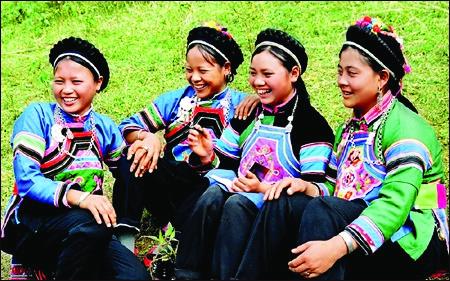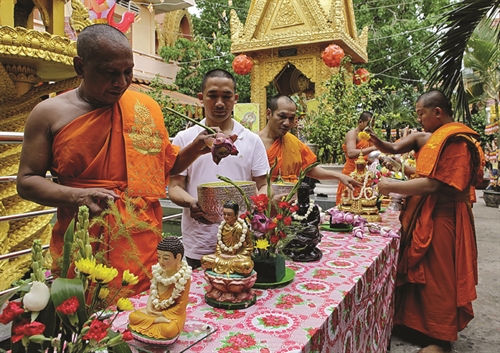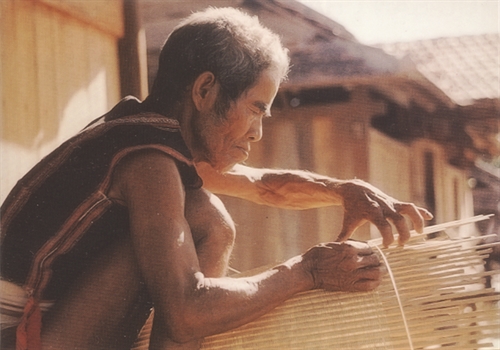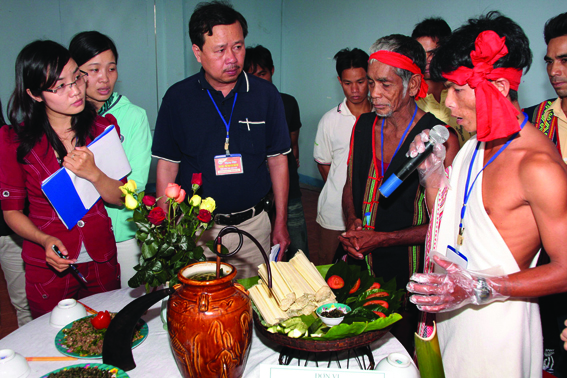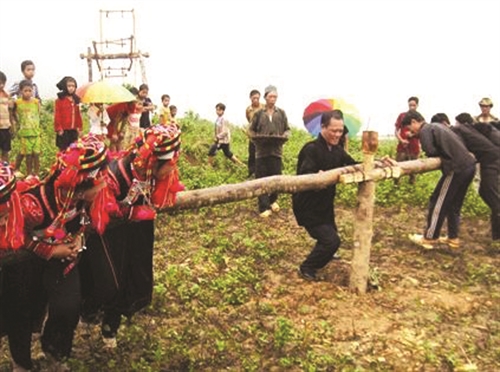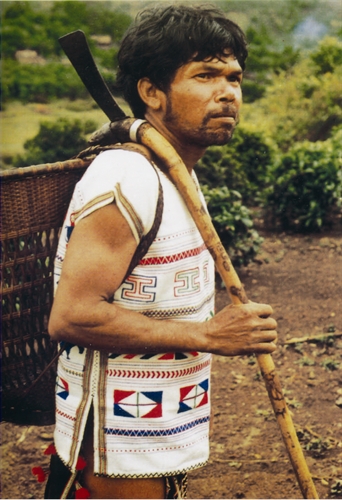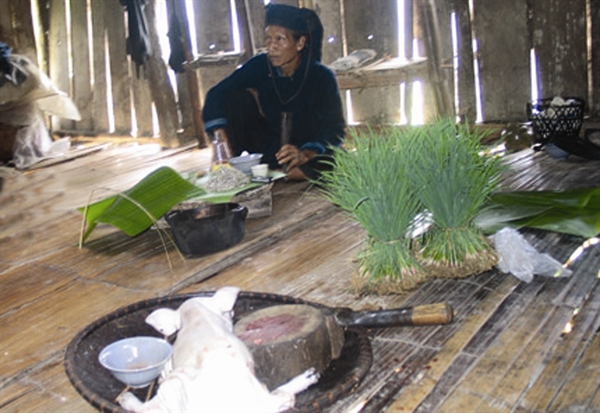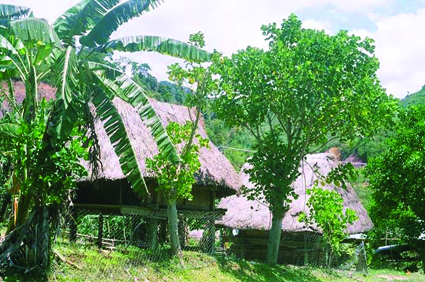Doctor Le Hong Ly
Folk Culture Institute
About 80 km northwest of Hanoi is a complex of historical relics popularly known as the Hung Temple. The temple is dedicated to the Hung kings, founder of the Van Lang State, the first State in the history of Vietnam.
The temple was erected in 1465 on Nghia Linh Mount in Phong Chau district, Vinh Phu province. It is actually composed of four temples, named respectively Upper, Middle, Lower and Well Temples. There are also some relics related to this legendary period, such as the Mausoleum of King Hung, the Oath Stone Obelisk of King Thuc An Duong Vuong, who, according to legend, succeeded the Hung kings on the throne.
 |
| Overview of the 2015 Hung temple festival__Photo: VNA |
Archaeologic finds as well as ethnological and folk culture documents have testified that at least two thousand years BC, a stable social organization had been set up at this place by the first tribes inhabiting present-day North Vietnam. This social organization was later known to the Vietnamese through the legend of the Hung kings who are regarded as the ancestors of the nation. This and other related legends and folk tales represent in large measure a common sense of national community growing out of the conviction that the entire Vietnamese nation descend from a common ancestor. This traditional belief is in fact an immaterial link which formed the cohesion and strength of the Vietnamese through the multi-millenary history of national defense and construction.
The ancestral memorial day which falls on the 10th day of the third lunar month, has become the festival of the whole country, when Vietnamese in whatever place, inside and outside the country, will turn their through to the country, will turn their thought to the Hung Temple with deep veneration.
“Whenever you may go, up in the highlands or down in the plain, Remember the ancestral memorial day on the tenth of the third month”.
These popular verses are known to virtually all adult Vietnamese. Thus the Hung Temple Festival has become the symbol of the solidarity and unity of the entire Vietnamese nation.
The main rituals at Hung Temple Festival are officially set for three days, from the 10th to the 12th day of the third month on the lunar calendar, but the pilgrimage usually lasts through the month with the number of pilgrims increasing year after year. The main service begins at the Upper Temple. In the old days, it was the district Governor of Phu Tho who was assisted by the district Governors of Lam Thao and Phu Ninh actingas acolytes. The Secretary of the district Governor’s office of Lam Thao would read the oration, while other dignatories in the province performed the ritual kowtows and offerings. In the past, the rituals also included a religious dance by the local song and dance troupe.
The holy offerings consisted of fruits, a slaughtered boar, a singed calf and a singed goat, and several large trays of cooked glutinous rice colored in white, red and violet, together with several trays of the best rice cakes and huge jars of rice wine. The procession forms the main part of the ceremony with young men from Lam Thao and Phu Ninh districts carrying gilded altars and chairs, on which symbolic figures are placed. The number of procession chairs might increase, if it was a good year for the crops. The chair was preceded and followed by young men and women armed with halberds, spears and swords and also a music band playing old-style instruments, all wearing their holiday best.
The processions stopped at the temple gate and began proceeding up to the Upper Temple via the Lower and Middle Temples. The carriers measured their steps to the strokes of the a big drum and a gong, three strokes in a row. Occasionally, the procession was punctuated by along roll of the drum and the flag carrier began to wave the flag earnestly to signal a difficult passage. Everyone would utter a deep howl in the manner of primitive man, as the drum sticks struck against the body of the drum exhortingly. When the procession reached the Lower Temple which offered a large flat ground, there was a general outburst of joy as everyone, chair and flag carriers alike, scrambled around the temple, hence the name of “Flying Procession”. Men shouting, flags flying and drum and gong beating filled the place with a tumultuous noise. This coupled with the blue smoke emitted from the innumerable bunches of joysticks from the temple seemed to bring the onlookers back to the distant past.
The procession aside, many entertainments of a traditional character take place at various places around Nghia Linh Mount. For instance, a ritual song and dance typical of Phu Tho province was held in front of the temple. The there was a “dragon” boat race in Da Vao lake, the throwing of cloth balls through a loop above a pole, the playing of Chinese chess with human pawns, swinging on bamboo poles, wrestling...
Festival goers from all parts of the country converged on the vast ground specifically prepared for the occasion. The colorful dresses adorned the place with joyful notes against the backdrop of the lush green of vegetation in spring time.
Through many centuries and in spite of the vicissitudes of history, the anniversary of Hung Kings remains the most sacred anniversary for all Vietnamese, whatever his background. Gathering on Nghia Linh mountain on this auspicious day, Vietnamese of all ages and all backgrounds, wold feel bound together by an invisible link. Not a few overseas Vietnamese returning to visit the country on this occasion, shed tears as they watched the performances of the sacred rituals.-
